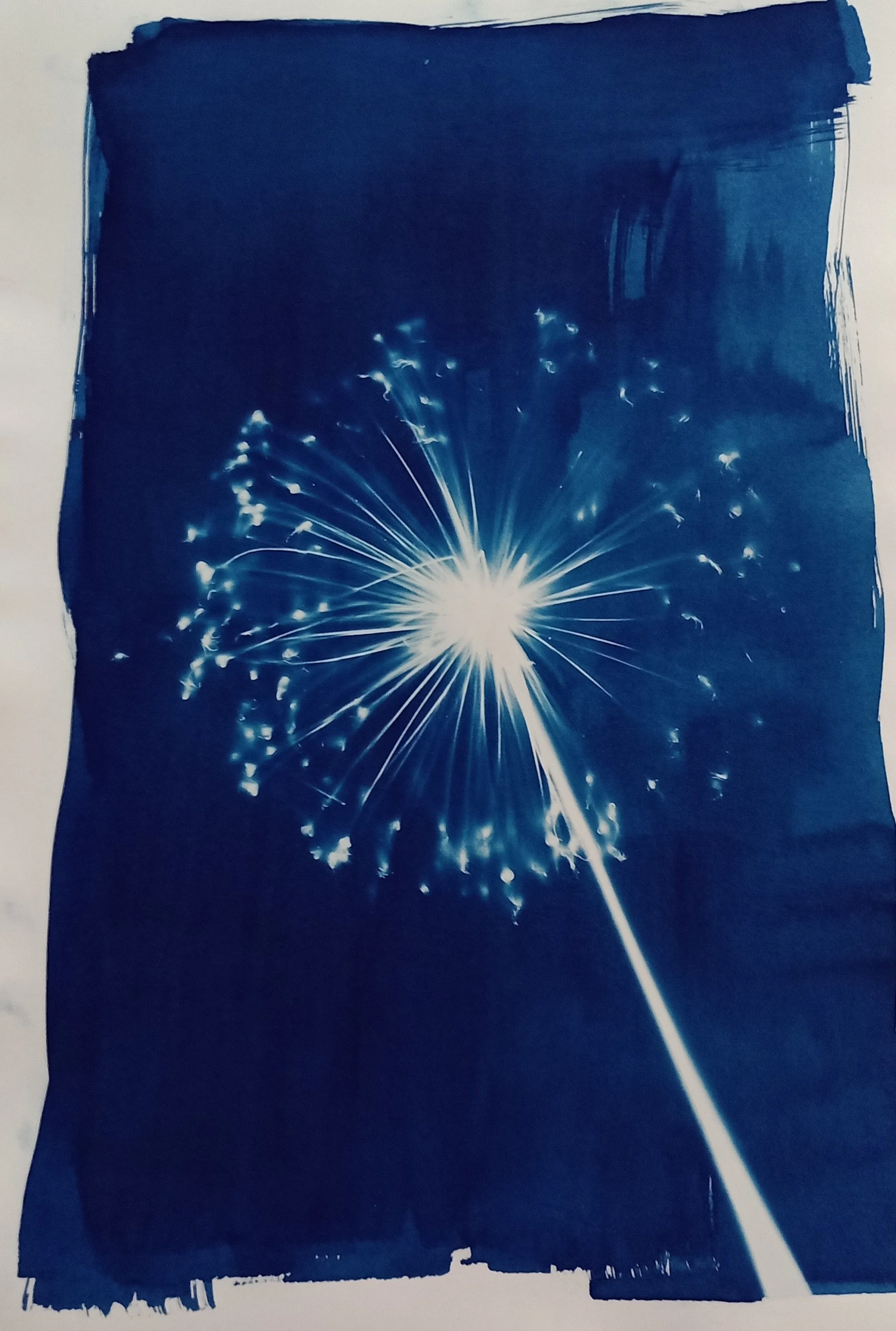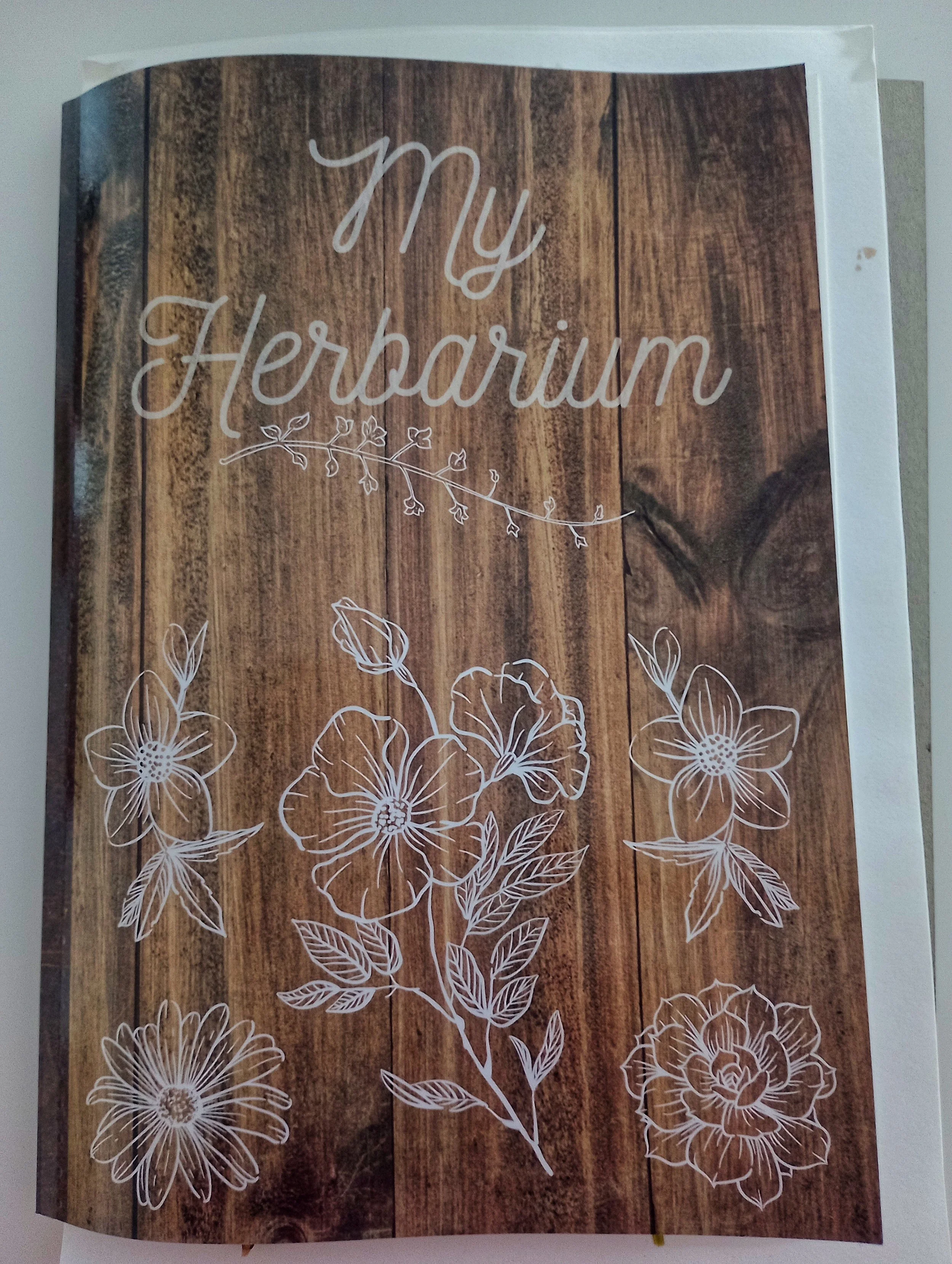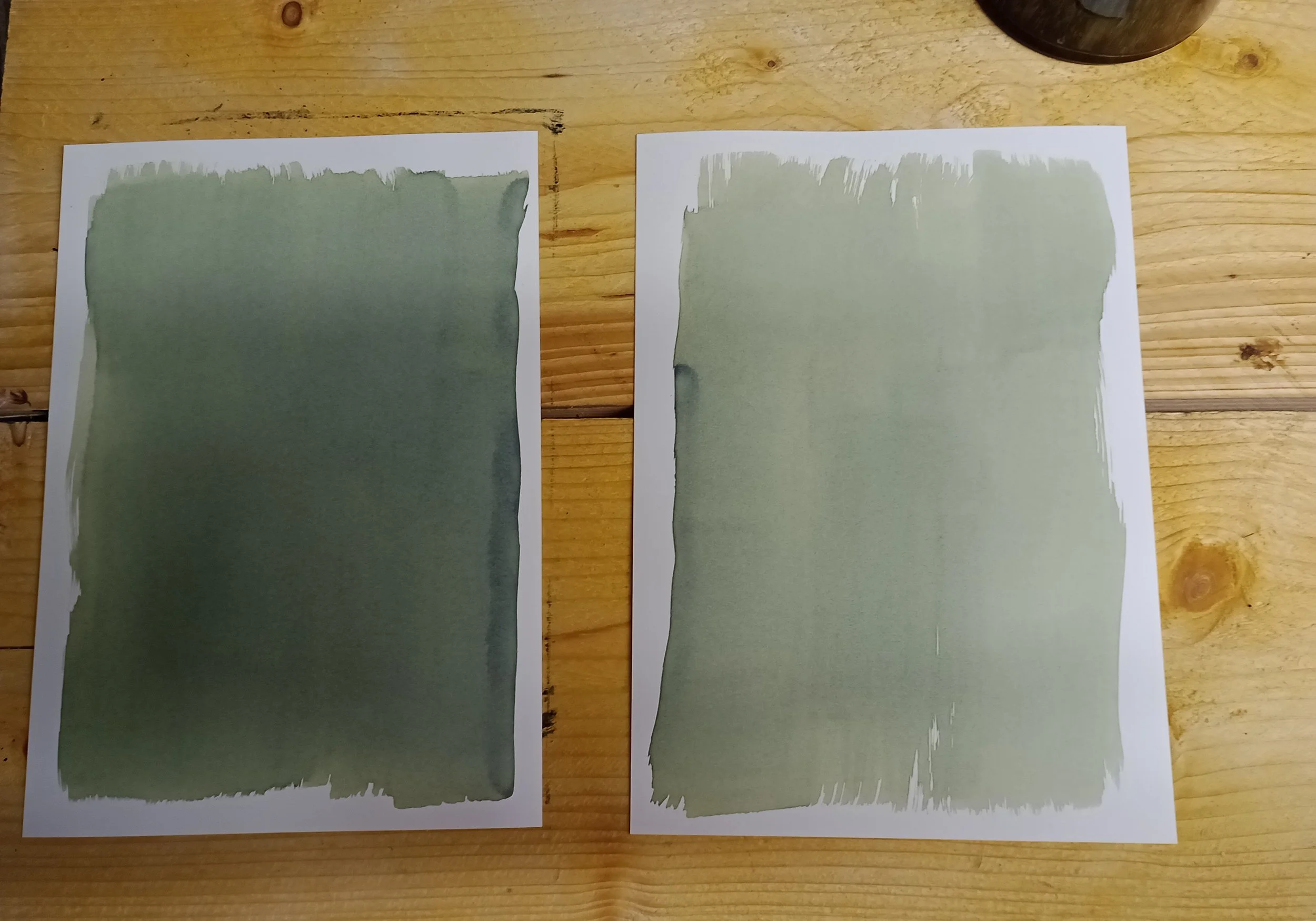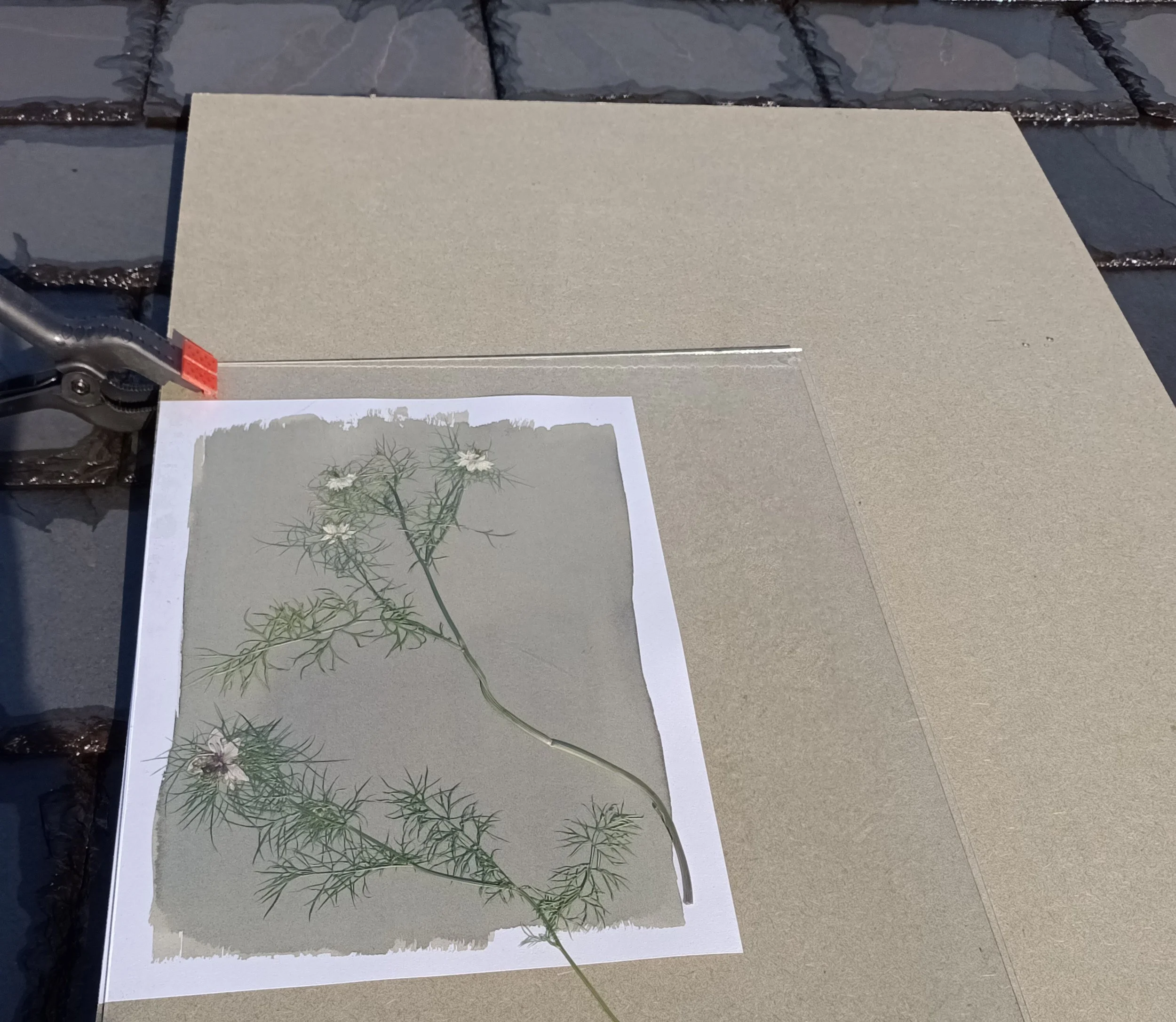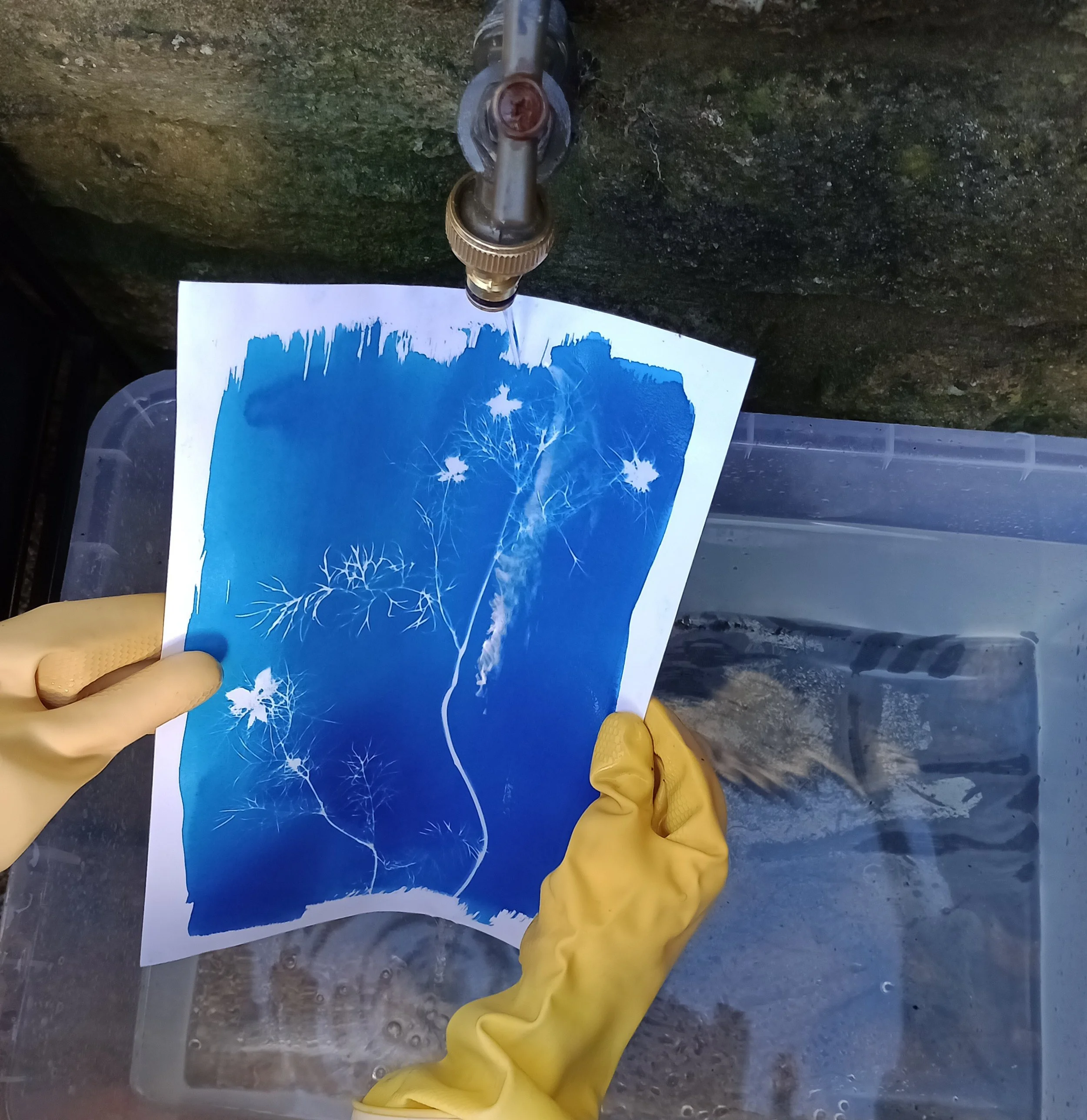Making Pressed Flower Cyanotypes
Allium Cyanotype (A3)
Over the last few years, I have developed a love of pressing flowers. Whilst researching the history of pressing flowers, I came across an article on cyanotypes. Cyanotype is a 180-year-old photographic printing process that produces prints of a dark blue colour. I was fascinated to read that cyanotypes were invented in 1842 by John Herschel and in 1843 the botanist, Anna Atkins, used cyanotype printing to create an album of algae specimens.
The cyanotypes created by Anna are simply beautiful. It was then that I wanted to learn as much as I could about creating cyanotypes with my pressed flowers. So, my research began and after some experimentation, I decided to make some for family and friends. I now sell them on my webshop.
I use the following:
Thick archival paper (A4 and A3 size).
Cyanotype chemicals.
A sponge brush or paint brush.
A large piece of MDF.
An A4 piece of glass.
Large clips/clamps.
Pressed Flowers and Ferns.
Sunshine!
Firstly, I select the pressed flowers that I am going to use. I keep all my pressed flowers for making cyanotypes in ‘My Herbarium’ book.
Selection of pressed flowers
I then prepare the paper. I hand-paint the solution onto the archival paper so that the brush strokes are visible in the final composition. I leave the paper to dry in my workshop overnight. My workshop has no windows and no natural light, so it is ideal. It is important not to expose the paper to UV light. I typically prepare 20-30 sheets of paper at a time. I then store them in a light-proof bag until I am ready to use or until the sun comes out!
Preparing the paper
Once the paper has been left to dry overnight, I position the flowers onto the paper. The paper and flowers are then placed under glass and exposed to sunlight for approximately 10 minutes (longer on a cloudy day). The dried flowers in the image below are Nigella.
Exposure to the sun
Once the paper has been exposed to the sun, I rinse the paper in water for around 10 minutes.
Once all of the chemicals have been washed off, the cyanotype is then left to dry overnight. As they dry a deeper blue colour emerges.
Nigela Cyanotypes drying overnight
Every cyanotype is unique. I never know what the final cyanotype will look like - so each one is a surprise! Some work out well, some do not!
There are a number of flower cyanotypes on the market. However, some are giclée prints. My cyanotypes are not prints; they are the original compositions. Each one is unique - no two are the same!
